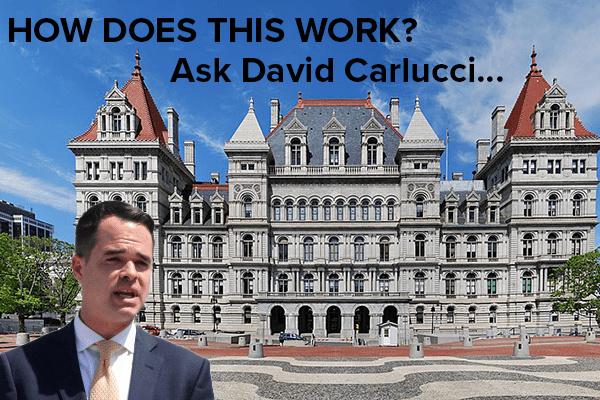|
RCBJ-Audible (Listen For Free)
|
The First Round Of Over $192 million Is Available For State Agencies And Municipalities
By David Carlucci
The United States faces a nationwide opioid epidemic, accelerated by substance use disorders from the COVID-19 Pandemic. There is no quick solution to resolving this crisis; it requires a multi-pronged approach, including treatment and prevention of opioids.
Under Governor Kathy Hochul’s leadership, New York State has dedicated itself to holding opioid manufacturers accountable for their misrepresentations of the drugs and making good, long-term use of allocated funding for substance use treatment and prevention programs. The Opioid Settlement Fund Initiative stands at the epicenter of the State’s aggressive approach to righting the wrongs of the past and writing a better future for all New Yorkers.
Many argue that today’s opioid epidemic is the result of opioid manufacturers, distributors, and pharmacies in the 1990s ignoring and misrepresenting the harmful effects of opioids. The COVID-19 Pandemic worsened the mental health of millions nationwide, increasing the risk of substance use disorders. According to a report on the continuing opioid crisis by the State Comptroller’s office, the number of opioid-related deaths surged by almost 300 percent between 2020 and 2021 in New York State. With this, New York State leadership determined it critical to promote and maintain an ongoing commitment to remedying and preventing the ongoing opioid epidemic via cross-generational, equity-based solutions—their solution: The Opioid Settlement Fund.
In 2021, Senator Rivera and Assemblymember Woerner introduced legislation aimed at moving public discourse and government action away from the death toll of the opioid crisis and toward supportive systems treating and preventing substance use disorders. The legislation called for the creation of the Opioid Settlement Fund and the formation of the Opioid Settlement Fund Advisory Board, all overseen by the Office of Addiction Services and Supports (OASAS). Two years later, Governor Kathy Hochul announced the first round of over $192 million in available funds for state agencies and municipalities to jumpstart these programs.
How does it work?
With corporate misrepresentation of risk being one of the leading causes of the opioid epidemic and other substance use disorders, the New York State government has initiated several lawsuits against pharmaceutical companies involved in the manufacturing, distribution, or marketing of opioid drugs. Most settlements result in financial compensation given to the government from these companies.
Following the passage of S.7194/A.6395, all funds received from settlements in litigation against these companies are directly placed into the Opioid Settlement Fund. In doing so, the law prohibits settlement money from being used on projects not related to remedying the opioid epidemic. By the end of 2022, the New York Attorney General’s office reached settlements totaling over $2.6 billion with companies from Johnson & Johnson, McKesson Corporation, Cardinal Health Inc., and Amerisource Bergen Drug Corporation.
The enacting legislation charges the Opioid Settlement Fund Advisory Board with making recommendations on allocating funding from settlements to state agencies and municipalities. The board works under the guiding principles of social equity and addressing co-occurring disorders. Per the advisory board’s November 2023 report to the Governor, these guiding principles will best be addressed through robust support across the continuum of care, explicitly concerning harm reduction. The board also recommends recovery, housing, and treatment as leading initiatives for combatting the opioid epidemic.
What comes next?
The $192 million in settlement funds is the first step in New York State’s substantial plan leading to the end of the nationwide opioid epidemic. The first round is underway, serving vulnerable communities recovering from decades of deceit and harm. These funds are already at work easing access to services including but not limited to recovery centers, medication for addiction treatment, low-threshold buprenorphine services, and scholarships for those looking to enter the addiction services workforce.
For more information on allocations and available funding for specific initiatives, check out the Opioid Settlement Fund Tracker. This comprehensive tool breaks down the opioid settlement funds made available by priority areas and initiatives so that residents can see how the settlement fund directly benefits their communities.
As the Attorney General’s office embarks on more lawsuits and the Governor announces additional available funding, the Opioid Settlement Fund will continue to grow and reach every community harmed by the ongoing opioid crisis with necessary services. Most importantly, the settlement fund will build the foundation for a long-term solution to the opioid crisis, ensuring that younger generations do not fall victim to substance use disorders, pharmaceutical companies are held accountable for their actions, and New York State adequately addresses the inequalities resulting from the epidemic.










